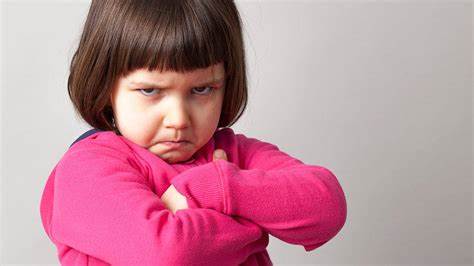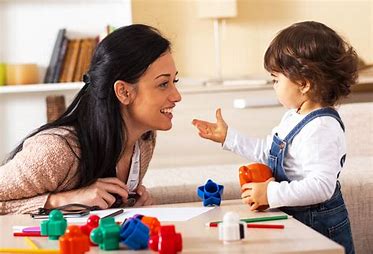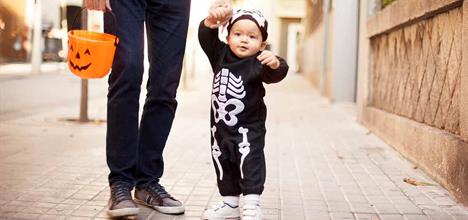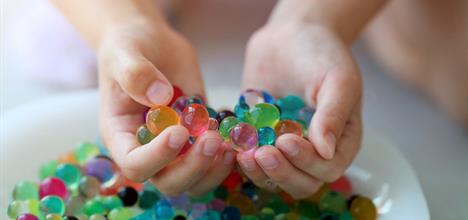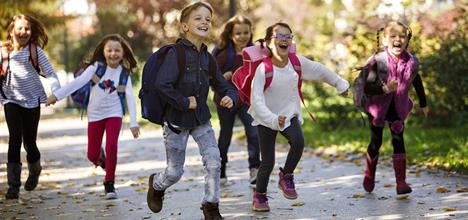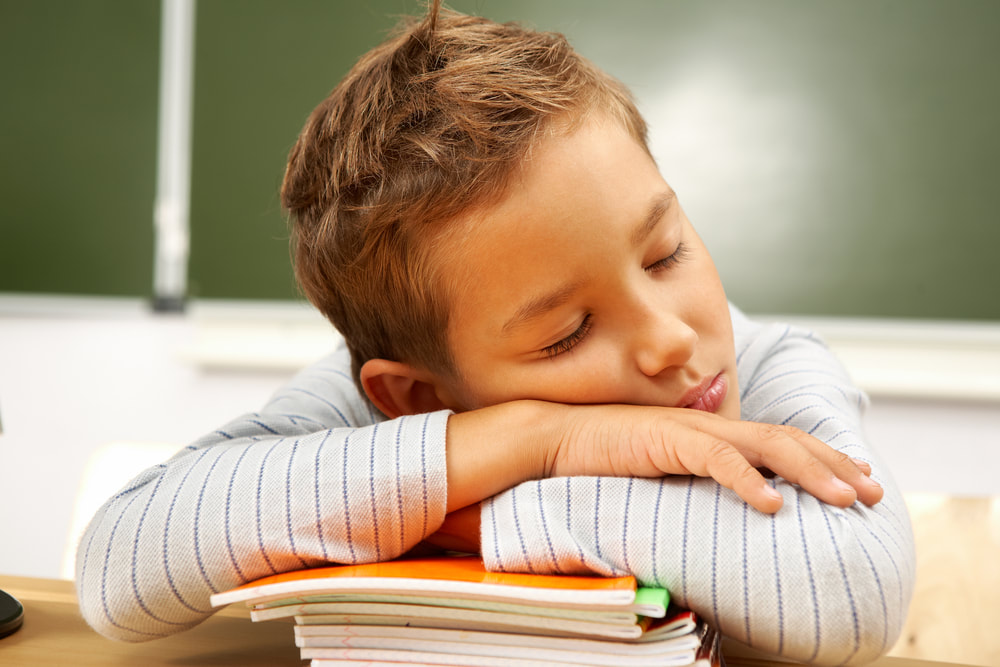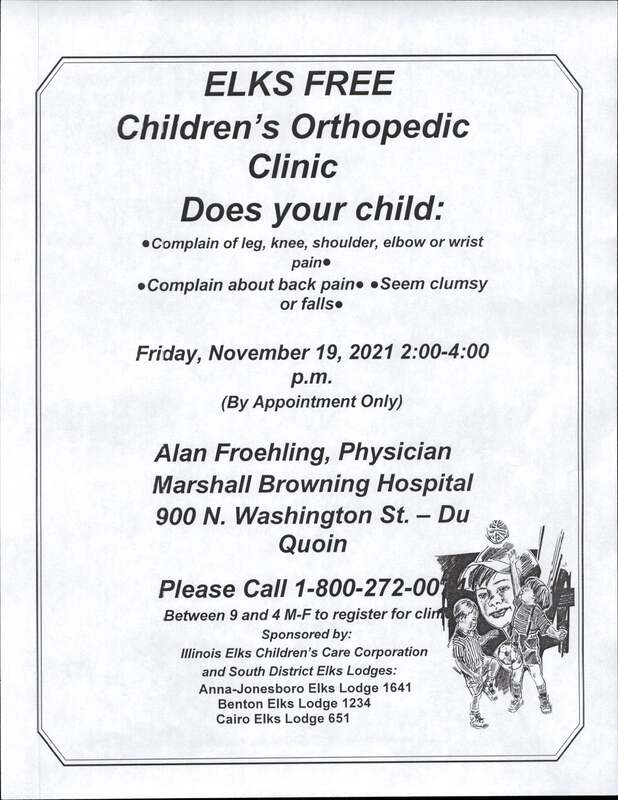Everybody Gets Mad: Helping Your Child Deal with ConflictHelp Children Act Calm
Sometimes, getting along with other kids is hard. Some kids:
Everyone Gets Mad. Anger doesn’t usually last a long time, but it is a very strong feeling when it happens. Children get mad when:
When children are mad, their bodies react:
When children are angry, it is:
Teach Your Child to ACT CALM When children get mad, they can ACT: Acknowledge
If someone tries to start a fight, your child can be the one to stay CALM: Calm down
Find ways to solve the problem without fighting.
Children do what they see others do. You are your child’s most important role model. If your child is still having trouble getting along with other kids, talk with your pediatrician. Connected Kids: Safe, Strong, Secure (Copyright © 2006 American Academy of Pediatrics)
0 Comments
Following are some tips for things you can do as a parent to help your child grow and develop.
 Help Children Act Calm
Everyone Gets Mad-Anger doesn’t usually last a long time, but it is a very strong feeling when it happens. Children get mad when:
Teach Your Child to ACT CALM When children get mad, they can ACT: Acknowledge
If someone tries to start a fight, your child can be the one to stay CALM: Calm down
If your child is still having trouble getting along with other kids, talk with your pediatrician. Last Updated 11/2/2009 Source Connected Kids: Safe, Strong, Secure (Copyright © 2006 American Academy of Pediatrics) From www.healthychildren.org
By: Dina DiMaggio, MD, FAAP If you are celebrating your little one's first, second, or third Halloween this year, it is important to know how to make the night safe and fun for even the tiniest monsters! Here are 8 tips to consider. 1. Allow for plenty of time to fright-prep .As a parent, you know your child best. Keep a look out for fears and anxieties about Halloween. The best way to handle fear and get a toddler ready is to discuss what's going to happen. Reading books to your child about trick-or-treating—and Halloween in general—are great ways to help that discussion. You might even want to have your child practice dressing up in their costume before the big day. Toddlers need to know that Halloween is just for fun and the scary stuff is all pretend. If your little one doesn't want to partake in Halloween, then let that be OK. There is always next year, and 12 months can make a big difference! 2. Play with pumpkins. Allowing your baby or toddler to squish their hands around the insides of a pumpkin you've carved can be a great sensory play activity. There are also plenty of no-carve pumpkin decorating options to try. 3. Go trick-or-treating before dark .Infants and young children thrive on routine, and it is easy for Halloween festivities to throw those routines off-track. If your schedule permits, try trick-or-treating while it's still light outside so you can stick to your child's regular bedtime. If your child is sleeping, try putting a "please knock" sign on your door for other trick-or-treaters. If trick-or-treating doesn't start until after dark where you live: Check your local library, recreation center or neighborhood news site for Halloween activities offered earlier in the day. 4. Watch for toddler tripping hazards. Even on their best days and in the best conditions, it is still a struggle for some toddlers to walk without falling. While you won't be able to prevent all of the tumbles, choosing a costume that is not too long or too bulky will help a great deal. Be sure to check the forecast before you go out and try to include layers if needed. Also remember to help your little one climb up and down any steps and porches. 5. Have a "Plan B" costume. From leaky diapers to spit-up to toilet training accidents, this age is always a reason to pack a backup costume and plan for the unexpected. If potty-training is still a new thing and there's a narrow window between "I have to go" and an accident, you might want to rethink a complicated costume. There is also no harm in putting them in an easy-on, easy-off diaper. 6. Be ready to pack it in early if needed. A house or costume that's too scary, a trip or a fall, or just a hard day can send your child into the temper tantrum zone. But all is not lost! If your toddler quickly loses interest in trick-or-treating, see if they would prefer to answer the door and hand out candy to all the "big kids" instead. Plus, it can help you reinforce those important sharing skills! 7. Take precautions with added sugar. Although Halloween and sugar often go hand in hand, the AAP recommends limiting the amount of sugar kids get each day. This may not be an easy task when most Halloween treats are packed with added sugar and artificial colors your little one doesn't need. Look out for snacks and treats that may seem "healthier" but still contain added sugars—flavored yogurts, flavored milk, sugary cereals, granola bars, juices and fruit gummy snacks. Other options for trick-or-treating toddlers, or those who choose not to give out candy, include crayons and notepads, stickers, stamps, chalk, bubbles, tattoos, playdough or stuffed animals. Here are some ideas for festive but healthy fall treats:
Keep an eye on what your child has in their mouth at all times while on the trick-or-treat trail—it's so easy to get distracted! It's best to avoid eating while walking or running. Once your child is ready to enjoy treats at home, keep in mind that babies and toddlers should not have any hard candies, caramel apples, popcorn, gum, small candies (jelly beans, etc.), gummy candy, pumpkin seeds or anything with whole nuts. Candy wrappers, stickers, small toys, or temporary tattoos can be a choking hazard, as well. As all parents know, babies and toddlers will put just about anything into their mouths! About Dr. DiMaggioDina DiMaggio, MD, FAAP is a board-certified pediatrician at Pediatric Associates of NYC and at NYU Langone Medical Center. She is the co-author of The Pediatrician's Guide to Feeding Babies and Toddlers, a comprehensive manual written by a team of medical, nutrition, and culinary experts. Follow her on Instagram @Pediatriciansguide. Last Updated 9/26/2023 Source American Academy of Pediatrics Council on Early Childhood (Copyright © 2022) The information contained on this Web site should not be used as a substitute for the medical care and advice of your pediatrician. There may be variations in treatment that your pediatrician may recommend based on individual facts and circumstances. FOLLOW US © Copyright 2023 American Academy of Pediatrics. All rights reserved. Courtesy of Nemours KidsHealth
From the candy to the costumes, Halloween is a fun-filled time for kids and parents. Here's how to make it a safe, trick-free treat. (Note: Follow your area’s COVID-19 guidelines and keep kids home if they’re sick with COVID-19 or any other illness.) Dressing Your Little Ghouls & Goblins
Kids under age 12 should:
For all kids:
When kids get home:
Make sure trick-or-treaters are safe when visiting your home too. Remove anything that could cause them to trip or fall on your walkway or lawn. Make sure the lights are on outside your house and light the walkway to your door, if possible. Keep family pets away from trick-or-treaters, even if they seem harmless to you. Halloween Goodies — What You Give Out and What Kids Get
Date reviewed: October 2022 Water-absorbing gel beads sold as sensory toys and used in vases and gardens are a growing problem among young children. What are water beads?Made of superabsorbent polymer chemicals, water beads are also known as jelly beads, hydro orbs, crystal soil and gel beads. They are also called sensory beads, used as play tools for children with autism and other developmental conditions. When the tiny, hard plastic balls are placed in water, they can grow up to 1,500 times their size. The clear, colorful beads can then be dried out and reused. Why water beads can be dangerous for young children The problem is that because water beads look like candy, young children may be tempted to swallow them. Kids also have put them in their ears, and even inhaled them. The beads can continue to grow once inside the body, causing blockages and life-threatening damage. And the beads may not be visible on X-rays. Although the beads are labeled as "non-toxic," concerns also have been raised about the safety of the chemical acrylamide used to make them. Water beads safety tipsIf you are interested in buying water beads, the American Academy of Pediatrics recommends:
Deaths and injuries of children have prompted recalls of water-absorbing balls, beads and toys shaped like fruit and animals. Recently, a recall was issued after one baby died and another was seriously injured from swallowing water beads in an activity kit. The Consumer Product Safety Commission (CPSC) has many reports of children being injured after ingesting water beads. Many cases involve young children under 3 years old swallowing water beads given to their older siblings. In two CPSC reports, children were treated for ear infections when doctors couldn't spot clear beads in their ears during an exam. The delay in finding the beads allowed them to grow until the kids, who were 5 and 7 years old, needed surgery. Both have ear drum damage, and one hearing loss. Poison Control reported a 6-month-old who needed surgery after swallowing a water bead; the baby later died from an infection. If you suspect your child swallowed water beads or put them into their ears, seek treatment right away. You can also call Poison Control at 1-800-222-1222 or get online help.Signs your child may have swallowed water beads
Last Updated 9/14/2023 Source American Academy of Pediatrics Council on Injury, Violence & Poison Prevention (Copyright © 2023) It's time again for the DuQuoin State Fair- a true southern Illinois tradition. Once you are a parent, going to the Fair takes on a whole new meaning (and costs!) Here are quick tips to make it a day to remember.
Plan your trip in advance. It will only take a short time and will be well worth it. Check out the "lay of the land" Know where the restrooms are. Check out the map and keep your eye out for the Refreshment stations, places where families can sit and relax. Bring the essentials you will need and keep them accessible. Backpacks are always a good idea. If you have a young one, don't skip the stroller. You will be glad you have it by the time you reach the gates. Another staple is "wet wipes", even if your kids aren't diaper-age. They are great on stick fair food, you can use them to wipe spills on clothing, and are especially handy to wipe of chairs and benches when you are ready for a break. Decide on your budget before you go. Know the costs before you go. The cheapest parking is $10.00 and that is for the Main Parking lot. If your kids are older, you can talk with them and give them each their own budget. One might be more interested in fair food, while the other loves the rides. Be aware of any specials and although a $25 armband for rides sounds pretty expensive you might find it the best deal if your family really loves the rides. Take advantage of the discounted ride coupons ($20) beginning July at participating Casey’s Stores. Purchaser will redeem coupons “Good for 1 All-Day Ride Wristband” at the Midway Redemption Booth. Prices during the Fair will be $25 on weekdays and $30 on weekends. Single Tickets $1.50; 20 Tickets $25; 50 Tickets $60 Ride tickets are $1.50 and it can take 3 to 4 tickets per ride. Remember, the fair is supposed to be an agricultural event and although the rides are enticing, there is lots more to enjoy and alot of it is FREE! The Fair offers a wonderful opportunity for kids to see animals "up front and close" along with other FREE family entertainment. Click here to see a schedule. The 1/2 mil track hosts a rodeo, tractor pulls, demo derby and motocross. Dont; forget about the petting zoo. It is a great favorite, especially for the younger kids. Bring cash- many vendors do not accept debit cards, Bring some of your own water and emergency snacks, Fair food is great, but also expensive. Bring some of your own to help keep costs down and tummies full! Prepackaged items are best because of the heat. Granola bars and fruit snacks are always great choices. It looks like it is going to be hot, so make sure if you take something that needs to remain cool, you have it in a cooler. Get there early. Getting there early means parking spots closer to the entrance, making it easier if you have to go back to the car for something you forgot.You will avoid longer lines at rides and events and beat the evening rush of teens and adults coming to the fair for a night out. If possible, go on a weekday and avoid the big crowds altogether. Divide and conquer. While it is important for families to have together time, if your children are of mixed ages, consider splitting off at some point so one adult can go with the older children and another with the younger ones. If you are a single parent, consider "teaming up" with another family or ask a friend to go. This will reduce wait times when kids tend to get impatient and crabby. Safety. Safety, Safety. Even the best family trip can get spoiled when someone gets hurt or lost. Bring your cell phone and for your youngest children, write the number on a small piece of paper and put it in their pocket. Point out people who work at the fair and encourage them to go to one of them or a vendor if they get lost. Avoid letting children wear clothing with their names. If you are letting your older kids go off on their own, set up a time/ place to meet and check in on a regular basis. Pace yourself. You don't have to do everything. It is okay to save some things for next year. Know when to call it quits. A big mistake parents can make is staying too long at the fair. It is important to remember that kids, especially younger one, don't have the same stamina as adults. The ones you see running to the gates are often in their parent's arms, being carried back to the car. Before exhaustion sets in and crying, tantrums or meltdowns occur, consider calling it quits for the day. It will help end the day ( and the whole fair experience) on a good note and create memories your whole family will cherish. It should come as no surprise that success — or failure — at school starts at home. Studies have linked poor academic performance to factors such as a lack of sleep, poor nutrition, obesity, and a lack of parental support.
The good news is that those same studies also show higher test scores for students who live in homes where healthy habits, regular routines, and good communication exist. How can you ensure your child heads off to school this fall with the best possible foundation? Follow these 10 tips and watch your child thrive. Enforce Healthy Habits You can’t perform well when you don’t feel good. To help your child have the best chance at doing well in school, make sure she follows healthy habits at home. Choose a bedtime that will give your child plenty of sleep, and provide a healthy breakfast each morning. Encourage exercise, and limit the amount of time she spends watching TV, playing video games, listening to music, or using the computer. Stick to a Routine Most kids thrive on structure and will respond well to routines that help them organize their days. In our house, for example, my son gets dressed, makes his bed, and eats breakfast while I make his lunch and pack his school bag with completed homework and forms. When he gets home in the afternoon, I serve him a snack and he does his homework while I prepare dinner. Your routines may differ, but the key is to make it the same every day so your child knows what to expect. Create a “Launch Pad” Veteran parents know it’s important to have a single place to put backpacks, jackets, shoes, lunchboxes, and school projects each day. Some call it a “launch pad,” while others call it a “staging area.” Our area is a hook by the back door. Whatever you call it, find a place where your child can keep the items he needs for school each day and keep him organized. Then you’ll know right where to find everything during the morning rush. Designate a Space At school your child has a desk or table where she works. There is plenty of light, lots of supplies, and enough room to work. Why not provide her with the same type of environment for homework? A designated homework space often makes it easier and more fun for children to complete assignments at home. A desk is great, but a basket of supplies and a stretch of kitchen counter work just as well. Read, Again and Again It is often said that children spend the first several years learning to read, and the rest of the lives reading to learn. The written word is a gateway to all kinds of learning, and the more you read to your child, the better chance he has of becoming a proficient and eager reader. Try to sit down with your child to read a little bit every day, give him plenty of opportunities to read out loud to you, as well, and above all have fun. While the importance of reading with your child cannot be stressed enough, it should not be the cause of stress. Learn Always Your child may be past the preschool years, but home education is still a critical part of his overall learning experience. “Some of the attitude recently is that it’s up to the schools and teachers to figure it all out, to make sure children are learning and healthy and safe,” says Barbara Frankowski, M.D., MPH, FAAP, and member of the AAP Council on School Health. “There’s only so much teachers can do. Parents have to fill in with good support at home.”Look for ways to teach your child throughout the day. For example, cooking combines elements of math and science. Use the time when you make dinner as an opportunity to read and follow directions, to discuss fractions, to make hypotheses (“What will happen when I beat the egg whites?”), and to examine results. Take the Lead Children learn by example. Let your kids “catch” you reading. Take time to learn a new skill and discuss the experience with them. Sit down and pay bills or do other “homework” while your kids do their schoolwork. If you display a strong work ethic and continually seek out learning opportunities for yourself, your kids will begin to model that same behavior in their own lives. Talk Often Do you know how your child feels about her classroom, her teacher, and her classmates? If not, ask her. Talk with her about what she likes and doesn’t like at school. Give her a chance to express her anxieties, excitements, or disappointments about each day, and continue to support and encourage her by praising her achievements and efforts. Show Interest Don’t limit your support to your child; extend it to her teachers as well. Meet the teachers and stay in regular contact by phone or e-mail so that you can discuss any concerns as they arise. Not only will it pave the way for you to ask questions, but it will also make the teachers more comfortable with calling you if they have concerns about your child. Expect Success Perhaps the most important way you can support your child’s efforts at school is to expect him to succeed. That doesn’t mean that you demand he be the best student or the best athlete or the best artist. Rather, let him know that you expect him to do “his best” so that he’ll be proud of what he can accomplish. If you make that expectation clear and provide a home environment that promotes learning, then your child will have a greater chance of becoming the best student he can be. This article was featured in a Healthy Children Magazine. Last Updated 10/14/2019 Source Healthy Children Magazine, Back to School 2007 During the long days of Summer, it isn't unusual for families to be a little more flexible with bedtimes. Evenings with daylight give families more hours to do things outdoors. Besides it is sometimes difficult to put your child down to sleep when it is still light outside.
Now that the start of school is approaching it is time to start thinking about setting up your child's sleep routine. According to the Sleep Foundation " a regular sleep schedule helps the body know when it’s time to sleep and wake up. A sleep schedule helps prevent fatigue, exhaustion, and daytime drowsiness." Sleep is extremely important to how your child learns, grows, and even behaves. Children who get enough sleep regularly do better in school and have fewer behavior issues. A regular routine at bedtime helps promote a better night's sleep and can also make bedtime easier for you and your child. Here are some simple tips:
Go to sleep! The process of adjusting a sleep schedule should be gradual. In the weeks leading up to going back to school, have your child wake up 15 minutes earlier and go to sleep 15 minutes earlier than they have been during their break. Continue to adjust their bed and wake times in 15-minute increments every few days until your child is sleeping and waking at the desired times for school. By the first day back to school, they should be adjusted to the new sleep schedule and ready to go. The South District Elks Lodges in cooperation with the Illinois Elks Children’s Care Corporation will sponsor a Free children’s orthopedic assessment clinic on Friday, November 19, 2021. The clinic is from 2:00 PM to 4:00 PM and is by appointment only. To make an appointment call the Illinois Elks Children’s Care office at 1-800 272-0074 between the hours of 9:00 AM to 4:00 PM Monday through Friday. There are no charges for any services at this clinic. No medical referral is necessary for the clinic. The Elks will hold the clinic at the Marshall Browning Hospital, 900 North Washington Street, Du Quoin. Dr. Alan Froehling from Mount Vernon will be the clinician.
ContactIllinois Elks Children's Care Bill Block [email protected]800-272-0074 Website |
Home |
News |
Blog |
Contact |
Copyright © 2024

